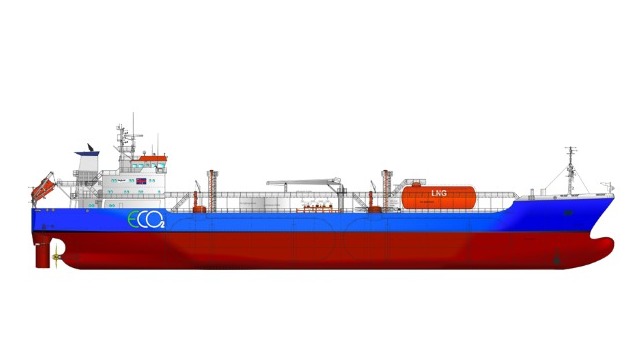Enabling Carbon Capture Applying Existing Technology for CO2 Transport

With the increasing focus on carbon capture and storage as a vital part of the effort to reduce harmful greenhouse gas emissions, the hunt is on for new technologies to provide maritime transportation solutions for CO2 transport. Using existing technology primarily for the LPG segment, Høglund Marine Solutions, in collaboration with HB Hunte Engineering, says they have developed a new system that more than doubles current vessel cargo capacity to transport liquefied CO2. They believe it can contribute to the rapid scale up of CO2 transport to support the implementation of carbon capture.
The transportation solution uses a unique bilobe tank with a capacity of 8000cbm, drawing on cargo handling system (CHS) and tank designs that they have previously proven in LNG, LPG and other sectors. The development of this solution came the companies said follows a proof of concept request from gas technology experts.
“With the global economy facing more pressure to reduce its carbon emissions, we must develop the technology for a viable CCS chain, and new ways of solving the complex challenges that come with upscaling CO2 transportation,” said David Gunaseelan, Vice President of Sales and Marketing at Høglund.
The companies believe they have a readily available solution by using and adapting existing tanker designs. They said that their research shows they can more than double the transportation capacity of liquid CO2 over current vessel capacity without the size, weight and stability concerns that would have come from a higher capacity “monolobe” design. Further, their design can also be quickly adapted for LPG, giving extra flexibility to a vessel that uses that gas.
“CCS is a core technology area in realizing the important goal of a net-zero economy. With new lines of finance emerging that support decarbonization, we must develop the technology to achieve it at pace and scale,” said Wolfgang Franzelius, Director Sales & Business Development at HB Hunte. “We are happy to team up with Høglund to support the development of safe and economical sea transport of captured carbon to a point where it cannot harm our planet.”
Currently, according to the companies, the maximum capacity for transporting liquefied CO2 is approximately 3600cbm, or roughly 1770 tonnes in dedicated CO2 tankers predominantly with specialist operators, such as Larvik shipping. However, as CCS chains develop, maritime transportation capacity needs to increase significantly, requiring innovation in tank design and cargo handling systems.
Using the tank configuration in the company’s design they believe has a direct and positive impact for the use of different alternative material and reasonable fabrication processes while complying with IGC Code and conventional rule. They believe their design will allow the production of a solution that is substantially lower cost and risk than conventional very large diameter cylindrical type offering the same capacity.
